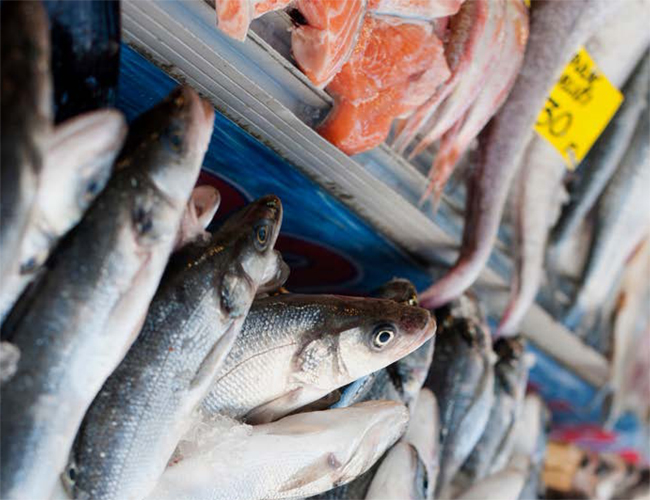Ithaca, NY, April 15, 2021 - The "A Call for Innovation: New York’s Agrifood System" report (pdf) is the result of collaboration between the Center of Excellence for Food and Agriculture (COE) and the Center for Regional Economic Advancement (CREA) at Cornell University.
The COE launched in September 2018 with a mission to grow New York’s food, beverage, and agriculture economy by serving as a hub for NY businesses to connect with the expertise and resources they need to innovate, grow, and thrive. The following year, New York state invested $15 million over three years to establish the Grow-NY Food and Agriculture Competition, which awards $3 million a year to startups that demonstrate they can execute bold plans to grow jobs, connect with local industry partners, and contribute to the upstate NY economy.
CREA was charged with running the Grow-NY Food and Agriculture Competition, now entering its third year. These two programs share the goal of growing an enduring food and agriculture innovation cluster in central and upstate NY.
Leaders of both programs saw an opportunity for target beneficiaries and other stakeholders in the region to play a role in informing the competition of business and investment opportunities. Inspired by the highly influential Y Combinator series “Requests for Startups,” which articulates descriptions of the startups that Y Combinator leaders wished entrepreneurs might explore, Cornell AgriTech proposed to produce a report on the most pressing problems and needs facing the agricultural community in Grow-NY today with the hope and intent of inspiring future innovation, commercialization, and entrepreneurial activity.
Despite the resiliency food and agricultural players have demonstrated in continuing to supply food and other necessities during the ongoing crisis, COVID-19 has nonetheless revealed our food system’s fault lines. There is an even greater urgency to understanding the common pain points in the region’s agriculture, processing, and distribution sectors.
With a track record of attracting, bolstering, and showcasing agrifood innovation, COE and the Grow-NY program are uniquely positioned to identify and analyze the themes drawn from firsthand reports made by primary sectors in the region’s agrifood community, with actionable outcomes.
The hope is that this report will foster regionalization and diversity in our agricultural sector by offering evidence-based recommendations and guidance to aspiring inventors, innovators, and startup founders, as well as investors looking for investment opportunities in the agriculture, processing, and distribution space.
Seafood: Where Sea Grant Comes In

On page 47 of this 62 page report is information about "Getting Seafood to Market."
The small but mighty seafood industry in New York state is facing similar challenges to the state’s beef, pork, and lamb producers.
NY’s fishing and aquaculture industry is not large; the biggest port in the state, Montauk on Long Island, brought in 11.5 million pounds of seafood in 2019, according to the National Oceanic and Atmospheric Administration (NOAA).
The top 15 ports in the U.S. each brought in over 100 million pounds in 2019. However, as in many other smaller ports, Long Island’s catch sells for a higher price point, on average, than some larger producers*.
Despite their comparatively smaller size, Long Island ports play an important role in supplying a growing demand for locally caught and raised seafood in New York City restaurants.
Aquaculture is also a significant and growing industry in NY, with oyster farming leading the way on Long Island.
When the pandemic shut down the city’s restaurants, the local fishing industry scrambled to redirect supply and identify new markets including direct-to-consumer sales. Like meat processing, seafood processing is heavily regulated and requires strict compliance with food safety regulations to turn raw products like whole fish and shellfish into filets and customer-ready products.
According to Michael Ciaramella, an extension specialist in seafood safety with New York Sea Grant and Cornell Cooperative Extension at Stony Brook University, the ability to quickly adapt and switch to alternative marketing strategies is challenging and costly for Long Island’s seafood producers.
Citation
* In 2019, the port at Montauk, NY (on Long Island), sold its 11.5 million pounds of seafood for an average of $1.55 per pound. Alaska, on the other hand, is home to 19 of the country’s largest ports and brought in $2.5 billion pounds of seafood in 2019. Alaska’s biggest ports — the Aleutian Islands, Dutch Harbor, and Kodiak — sold seafood for less than $0.50 a pound on average. The Center for Regional Economic Advancement (CREA) analysis of NOAA Fisheries dataset “Landings by Top US Ports”
More Info: New York Sea Grant
New York Sea Grant (NYSG), a cooperative program of Cornell University
and the State University of New York (SUNY), is one of 34 university-based
programs under the National Oceanic and Atmospheric Administration’s
National Sea Grant College Program.
Since 1971, NYSG has represented a statewide network of integrated
research, education and extension services promoting coastal community
economic vitality, environmental sustainability and citizen awareness
and understanding about the State’s marine and Great Lakes resources.
Through NYSG’s efforts, the combined talents of university scientists
and extension specialists help develop and transfer science-based
information to many coastal user groups—businesses and industries,
federal, state and local government decision-makers and agency managers,
educators, the media and the interested public.
The program maintains Great Lakes offices at Cornell University, SUNY
Buffalo, SUNY Oswego and the Wayne County Cooperative Extension office
in Newark. In the State's marine waters, NYSG has offices at Stony Brook
University in Long Island, Brooklyn College and Cornell Cooperative
Extension in NYC and Kingston in the Hudson Valley.
For updates on Sea Grant activities: www.nyseagrant.org has RSS, Facebook, Twitter, Instagram, and YouTube links. NYSG offers a free e-list sign up via www.nyseagrant.org/nycoastlines for its flagship publication, NY Coastlines/Currents, which is published quarterly.